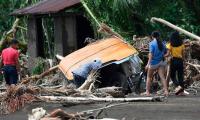Islamabad : The Pakistan Institute of Education (PIE) has unveiled the ‘Pakistan Education Statistics Report 2022-23,’ highlighting encouraging data on formal and informal education across the country.
Compared to the previous year, the number of educational institutions has risen by 12%, student enrolment has increased by 3 per cent, and the number of teachers has grown by 19 per cent.
Additionally, 74 per cent of primary schools now offer basic sanitation facilities, and 72 per cent provide access to drinking water.
The gross enrolment ratio in primary education stands at 78 per cent, including 83 per cent boys and 72 per cent girls, while the ratios for middle, high, and higher secondary levels are 54 per cent, 43 per cent, and 22 per cent, respectively.
This progress reflects improvements in educational facilities and quality, playing a crucial role in stabilizing the education system.
However, the report emphasizes the need for continuous development to tackle ongoing challenges in the education sector.
The PIE, in collaboration with JICA and AQAL, hosted a formal event to launch the "Statistics Report on Formal and Informal Education in Pakistan 2022-23.
Chief guest, Secretary Ministry of Federal Education & Professional Training, Mohayuddin Din Ahmad Wani praised the efforts of the Pakistan Institute of Education and stressed the importance of utilizing these findings for targeted reforms to improve national educational outcomes.
Dr. Muhammad Shahid Saroya, Director General of PIE, shed light on the report, stating that the number of educational institutions rose from 313,445 in 2021-22 to 349,909 in 2022-23, marking a 12 per cent increase.
Student enrollment grew from 54.87 million to 56.07 million, reflecting a 3 per cent rise, while the number of teachers increased from 2.14 million to 2.57 million, showing a growth of 19 per cent.
The report indicates that there are 26.089 million children out of school in Pakistan, including 10.855 million in primary education (5.795 million girls and 5.060 million boys), 4.850 million in middle, 4.404 million in high, and 5.980 million in higher secondary levels.
Recent data shows a slight decline in the out-of-school children rate, decreasing from 39 per cent to 38 per cent overall, with primary from 36 per cent to 35 per cent, middle from 30 per cent to 28 per cent, high from 44 per cent to 41 per cent, and higher secondary from 60 per cent to 59 per cent.
Out-of-school children numbers are as follows: Punjab 10.96 million, Sindh 7.98 million, Balochistan 3.43 million, Khyber Pakhtunkhwa 3.64 million, and 0.08 million in Islamabad.
The report also presents critical recommendations for improving the education system, including increasing investment to provide educational opportunities for every child, enhancing basic facilities in schools, addressing provincial disparities particularly in Balochistan and Azad Kashmir, strengthening safety measures, improving sanitation facilities for a healthy environment, and enhancing professional training for teachers. These measures are deemed essential for enhancing the country’s educational landscape.
Governor of Khyber Pakhtunkhwa, Faisal Karim Kundi addresses at an event on October 15, 2024. —...
This representational image shows a man driving a car. — Unsplash/FileLast year a minor caused an accident when...
Ms. Romina Khurshid Alam, Coordinator to the Prime Minister on Climate Change addresses the 3rd National Level...
Chief guest Mrs Reema Ayyaz Sadiq in a group photo with newly elected students council in a ceremony at FG Home...
Deputy Head of Malaysian High Commission Mohammad Sayafik Firdaus gives away "Leaders in Sustainability Awards" to...
Federal Minister for Interior Mohsin Naqvi lays a floral wreath on the coffin of martyr Sub-Inspector Haider Ali Shah...







